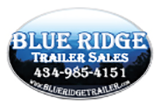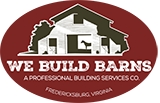Teach your horse to Stand Still!!!
Submitted by: Jan Snodgrass
Phone: 540/364-7673
Email Address: possibilities(at)theexcellenthorse.com
Date Added: 6/16/2014
Do you want a horse who is calm, has self-control, listens to you and who learns easily?
If your answer is, “yes,” then you are going to love this post!
Teach your horse to stand still!!
Part 1
Teaching a horse to stand still leads to calmness, self-control, thinking rather than reacting, better focus and a longer attention span. It makes horses easier and safer to work with and they learn faster. They are also less stressed and better balanced.
For many horses, being calm and standing still is a pleasant way to be. It is actually self rewarding, so once the horse learns to stand still, he is more likely to adopt it as a habit. When a horse is relaxed and calm enough to stand, he is much more ready to learn and ready to accept direction than a horse who does not stand still.
The main reasons horses don’t stand are tension, low level fear and habit. Often, the horse knows no other way of being, so he moves around. Many times something we humans do or have done is the cause of the problem. Our horse may be anticipating a painful grooming or a saddle that pinches. Maybe the horse feels insecure because he is away from other horses or his best buddy. Perhaps it is the training session that he is nervous about. Or maybe the horse has a bad habit moving around all the time because he never learned to do otherwise.
Some people think that the horse needs to be punished for moving around. But if a horse is already nervous, hitting or yelling at him is not going to make him any calmer and able to stand still. Something like making the horse move his feet when he doesn’t stand still does not really teach him how to calm himself. One important part of Tellington Training is to treat your horse the way you would like to be treated. In keeping with this theme, I like to think that some horses just need a little help in establishing standing still as a new habit.
The first thing I do is to place the horse in a calm posture. Have you ever seen a nervous fidgety horse standing squarely with its head down? Probably not since that is the posture of a calm horse. So I start by insisting that the horse stand square or squarish, with his head about the level of his withers.
Then I stroke the horse all over his body with a TTEAM wand. I stroke slowly with enough pressure on the wand to create a slight bend in it. I make sure I stroke all the way down the legs to the ground. Then I turn the wand around and tap the horse’s hooves with the button end of the wand. Stroking with the wand and tapping the hooves calms many horses almost immediately.
Then I work on teaching the horse to lower his head. If the horse is high-headed and will not lower his head from a signal on his halter, I go through the steps of teaching him. Here is article from my website on that topic.
http://theexcellenthorse.com/about-tteam-and-ttouch/calming-your-horse-by-lowering-his-head.html
By placing your horse in a balanced posture--square, or nearly so, with the head down and insisting when ever you work with your horse that he stay in this posture, you will begin to create a new habit. Stroking will further calm his energy and tapping his hooves will help ground him. Most people are very surprised at how well this works. Doing this on a regular basis will help many horses learn to stand still. But there is much more you can do.
Horses who won’t stand are usually distracted and unable to concentrate on what you are doing with them. Instead of allowing the horse to look off into the distance or touch all the things around him, insist that he stand straight and square. Then you need to get him to bring his attention back to his own body. Stroking with the wand will do this. Sometimes it is not enough though. If your horse is still unsettled, the next thing I use is a TTouch called Springbok. This is so very simple and very effective. Spread your hand out with the very tips of your fingers touching your horse’s body. Then quickly lift your hand up while snapping your fingers together. I like to think of them as flea jumps going boing boing, boing from place to place. I do these all over the horse’s body randomly jumping from place to place, on the horse’s back, neck, sides, and on the legs.
This will get almost any horse’s attention almost immediately! If you have a fidgety horse, try these exercises and TTouches and you will see a huge difference in your horse’s ability to stand still in a very short period of time.
Part 2 of this article can be found at The Excellent Horse on Facebook: https://www.facebook.com/pages/The-Excellent-Horse/785119968169508?ref=br_tf
Imagine the possibilities!!
|



